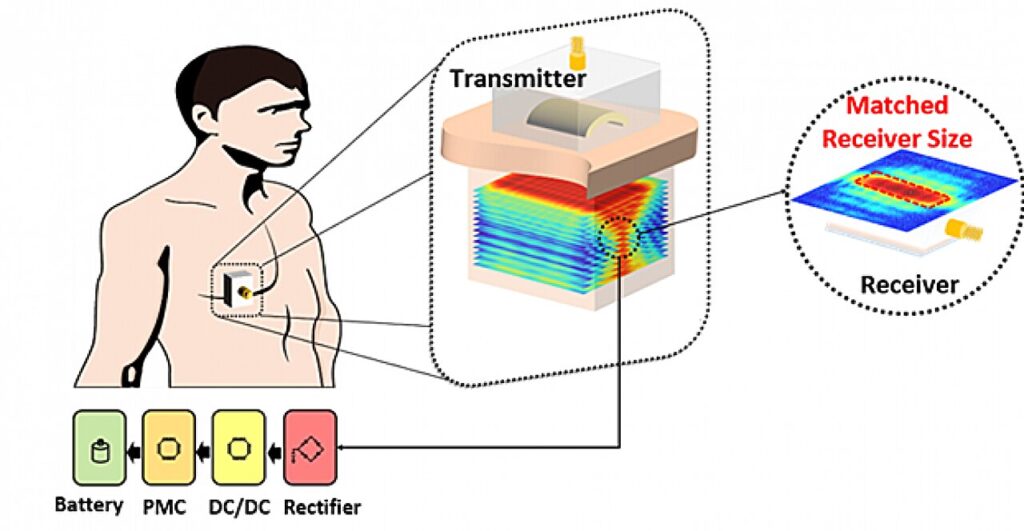Ultrasound-based wireless power transfer is becoming a more attractive option to power implanted biomedical devices because it could overcome many of the limitations and challenges facing other wireless charging approaches. Now, a new study has shown that the shape of the implanted receiver can significantly increase the efficiency of power harvesting from the ultrasound beam.
Current wireless charging technologies use either electromagnetic or radio waves to charge the batteries of implanted biomedical devices, such as pacemakers and cochlear implants. But these approaches lose a significant amount of power traveling through tissue, making them less efficient for deeper devices. They are also associated with potential problems, such as tissue heating and immune effects.
Ultrasound can penetrate deeper into tissues without losing as much energy or causing major side effects. In the new study, Professor Jin Ho Chang from the Daegu Gyeongbuk Institute of Science and Technology in the Republic of Korea led a team of researchers investigating how to improve ultrasound energy harvesting by altering the size, shape and position of the implanted piezoelectric receiver.
They found that positioning the receiver within the focal area of a focused ultrasound beam significantly increased the efficiency of the energy transfer. The work is published in the journal Nano Energy.
The piezoelectric receiver generated different phases of electrical signals depending on what part of the ultrasound beam it interacted with. The most efficient energy transfer took place in the beam’s main lobe. In other words, larger wasn’t necessarily better, even though a larger receiver would interact with more of the ultrasound beam.
Based on these conditions, an oblong-shaped ultrasound transmitter and receiver was developed. This transmitter forms a wide main lobe at the focal point, and the receiver matches the transmitted beam outputs energy with high efficiency.
“The combination of a focused beam and a well-matched receiver allows oblong-shaped ultrasound transmitter and receiver to achieve significantly higher energy delivery compared to conventional ultrasound-based wireless power transfer systems,” Professor Chang says.
The system’s efficiency was tested both under water and through 50mm of porcine tissue. The oblong receiver was able to fully charge a battery through the tissue in 1.8 hours, which is well within the range required for commercial batteries.
“We believe that these findings will be a stepping stone for a significant advance in ultrasound-based wireless power transfer technology,” says Chang. “Its innovative design and demonstrated effectiveness hold tremendous potential for powering the next generation of deep implantable biomedical devices.”
Provided by
Daegu Gyeongbuk Institute of Science and Technology (DGIST)


